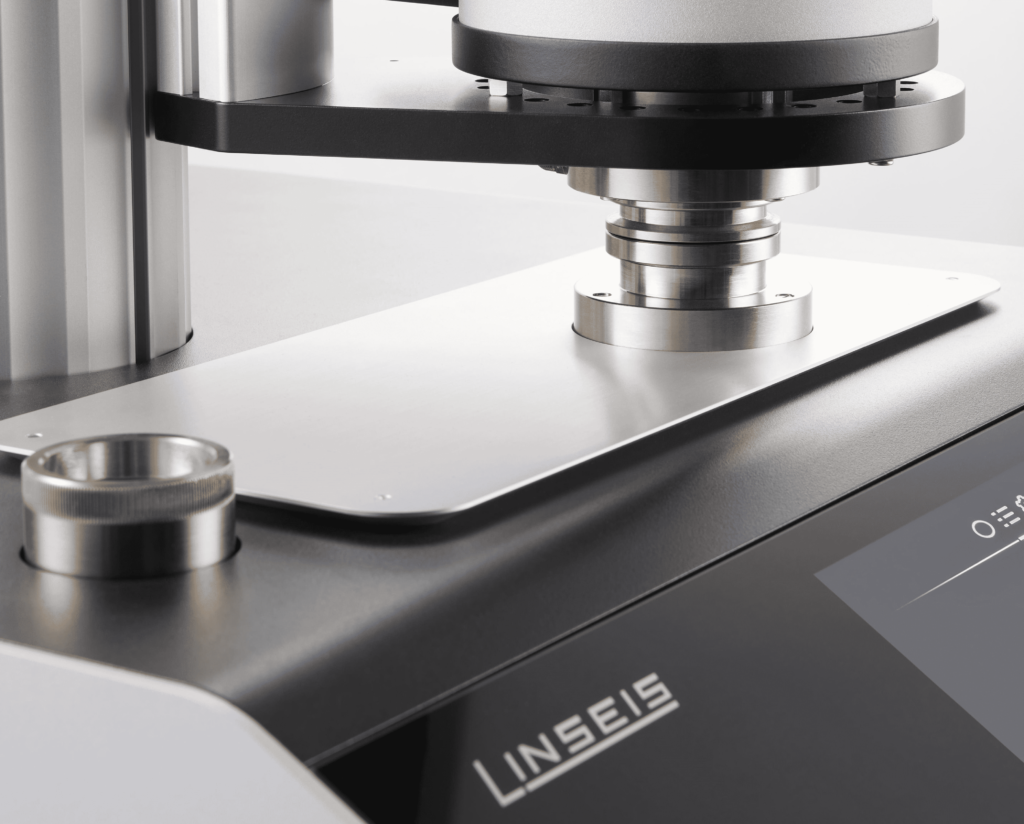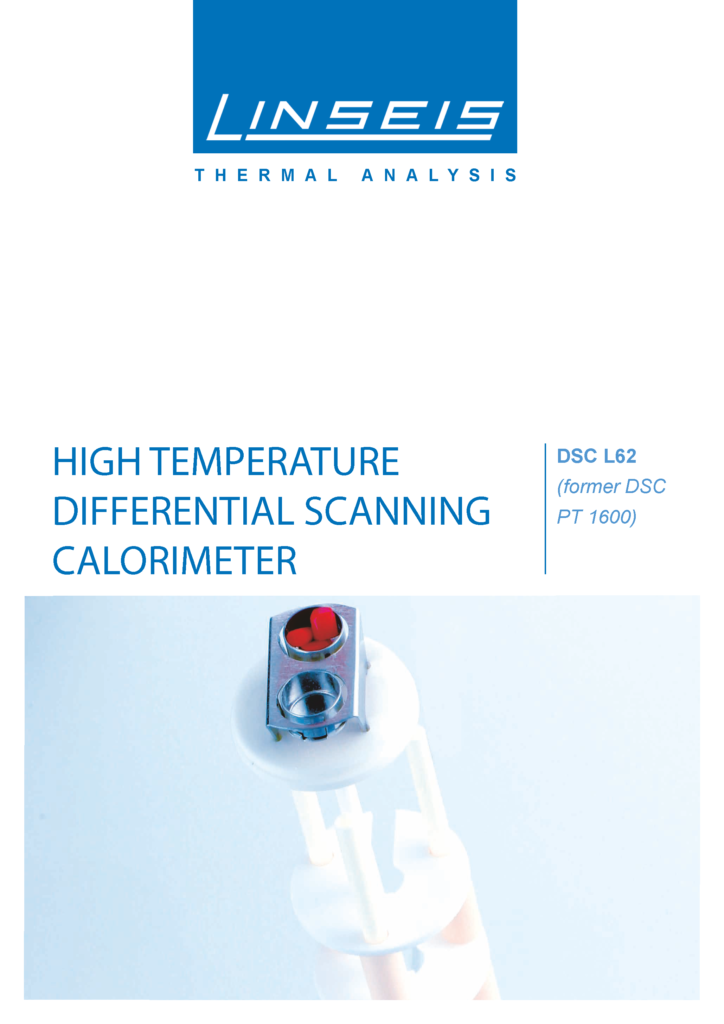The LINSEIS DSC L62 high-temperature differential scanning calorimeter is characterized by sensors with high calorimetric sensitivity, a short time constant and a condensation-free sample chamber.
These features ensure high detection sensitivity and stable baselines over the entire life cycle of the device. This creates ideal conditions for successful use in material development, research, teaching and quality control.
The modular concept of the DSC L62 allows it to be equipped with different oven types for an extremely wide temperature range from
-150 °C to 1750 °C.
Various measuring sensors for DSC and DTA as well as different crucible types are available. The vacuum-tight design of the system allows quantitative enthalpy and Cp determinations to be carried out in high-purity gas atmospheres and under vacuum (10-5 mbar). The device can also be equipped with an optional sample robot and a coupling to an MS or FTIR.
Measuring system of the HDSC:
Two different DSC sensors and a DTA sensor are available for this system, which can be easily exchanged by the user. There is also a wide range of different crucibles to choose from, depending on the application. Each DSC sensor is available as type E, K, S or B for the DSC L62.
This flexibility means that our DSC is equipped for any application, temperature or atmosphere and is always the perfect choice.
Unique features
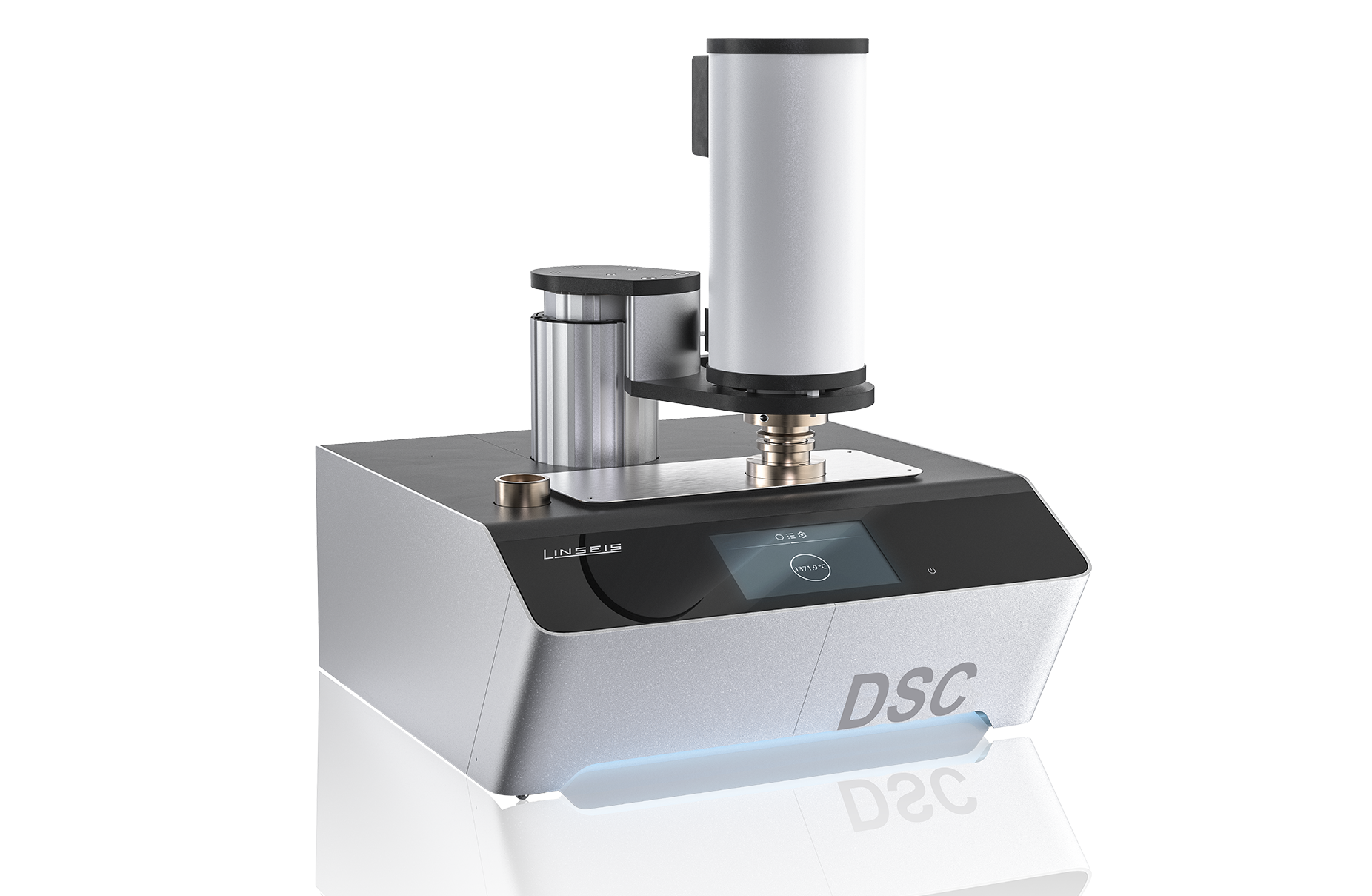
Vacuum-tight construction
High sensitivity
Modularity
Wide temperature range
Optional automation
Questions? We're just a call away!
+01 (609) 223 2070
+49 (0) 9287/880 0
Our service is available Monday to
Thursday from 8 am to 4 pm
and Friday from 8 am to 12 pm.
We are here for you!
Specifications
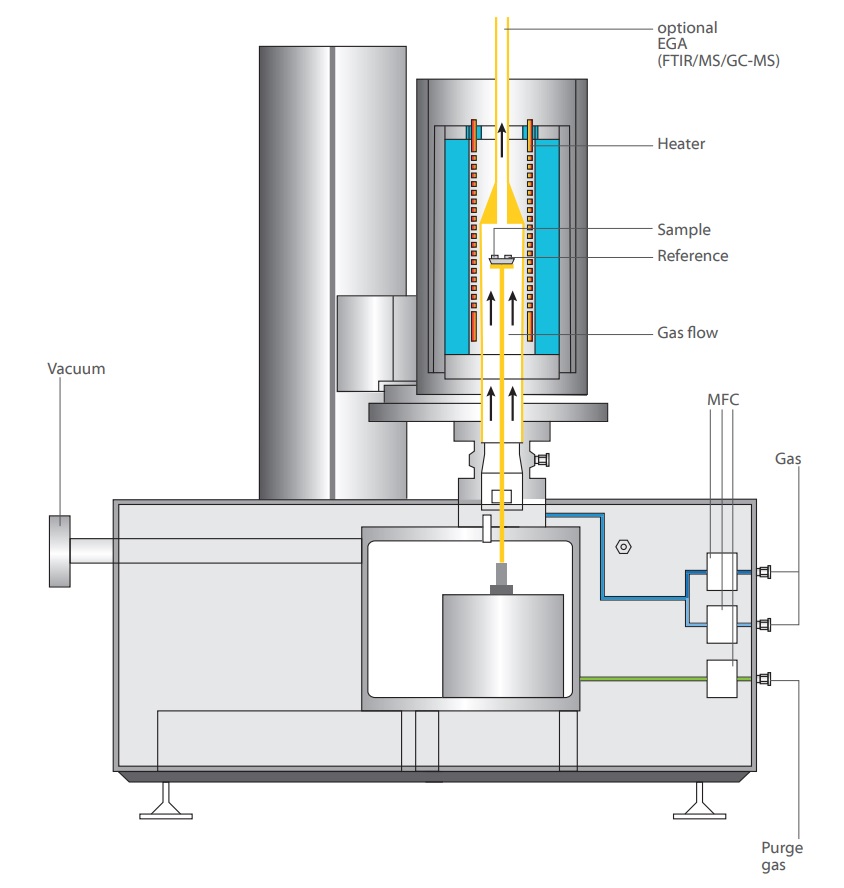
MODEL | DSC L62* |
|---|---|
| Temperature range: | -150 °C bis +1750 °C |
| Thermocouples: | E/K/S/B |
| Sensor types: | DTA / DSC / DSC – Cp |
| Heating rate: | 0.001 K/min … 50 K/min |
| Cooling rate: | 0.001 K/min … 50 K/min |
| Measuring range lambda: | +/- 2.5 mW bis +/- 250 mW |
| Sensor: | heat flux |
| Temperature modulation: | Yes |
| Atmosphere: | red, oxidizing, inert (static, dynamic) |
| Vacuum: | 10-5 mbar |
| PC Interface: | USB |
| *Specifications depend on the configurations | |
Data sheets
Software
Making values visible and comparable
The new Platinum software significantly improves your workflow, as the intuitive data processing requires only minimal parameter input.
AutoEval offers the user valuable assistance in the evaluation of standard processes such as glass transitions or melting points.
Thermal Library Product Identification Tool, provides a database of 600 polymers that enables an automatic identification tool for your tested polymer.
Controlling and / or monitoring the instruments through mobile devices gives you control wherever you are.

General functions
- Software packages are compatible with the latest Windows operating system
- Set up menu items
- All specific measurement parameters (user, laboratory, sample, company, etc.)
- Optional password and user levels
- Undo and redo function for all steps
- Stepless heating, cooling or lingering
- Multilingual versions such as English, German, French, Spanish, Chinese, Japanese, Russian, etc. (user selectable)
- The evaluation software has a range of functions that enable complete evaluation of all types of data
- Several smoothing models
- Complete evaluation history (all steps can be undone)
- Evaluation and data acquisition possible at the same time
- Data can be corrected with zero point and calibration correction
- The data evaluation includes: Peak separation software, signal correction and smoothing, first and second derivative, curve arithmetic, data peak evaluation, glass point evaluation, slope correction. Zoom/individual segment display, multiple curve overlay, annotation and drawing tools, copy to clipboard, multiple export functions for graphic and data export, reference-based corrections
Application
Application example: Production of ferrites
ZnO, Fe2O3 and Cr2O3 are used to produce magnetic ferrites. Cr2O3 is added to influence the magnetic and electrical properties. At 735°C the powder develops a mixed ferrite (exothermic reaction: -20.6 J/g). Above 1034°C and 1321°C, the heat flow switches to an endothermic reaction due to melting processes of the various phases.
The Linseis DSC L62 with a type S measuring sensor enables a very stable baseline with an extremely low noise level for temperatures up to 1450°C. This high sensitivity is absolutely necessary in order to be able to carry out exact enthalpy measurements and evaluations.
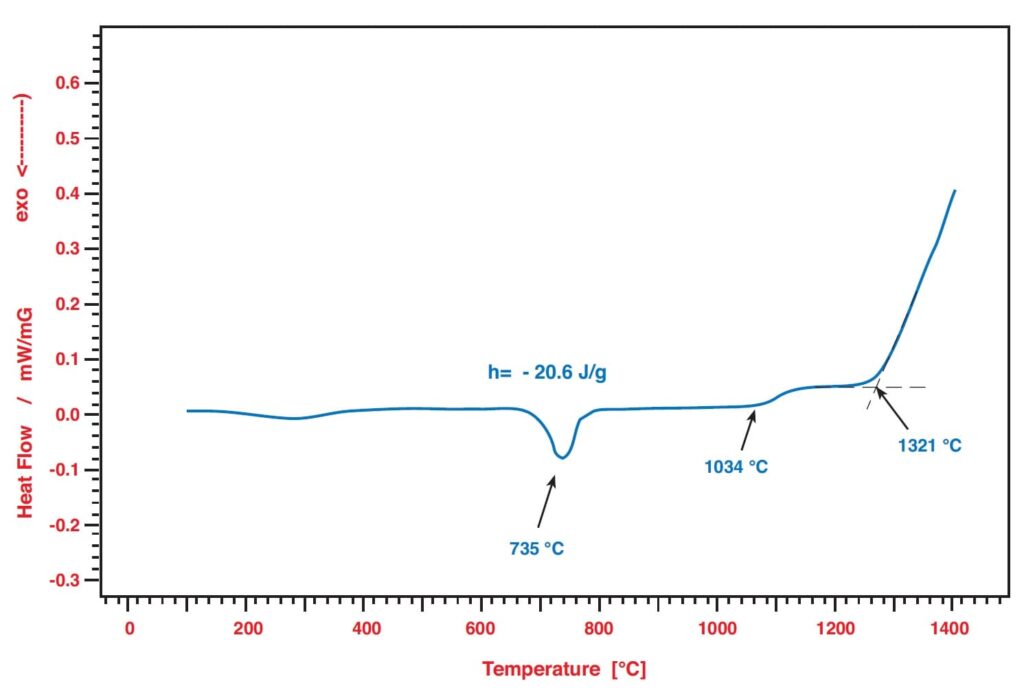
Well informed
